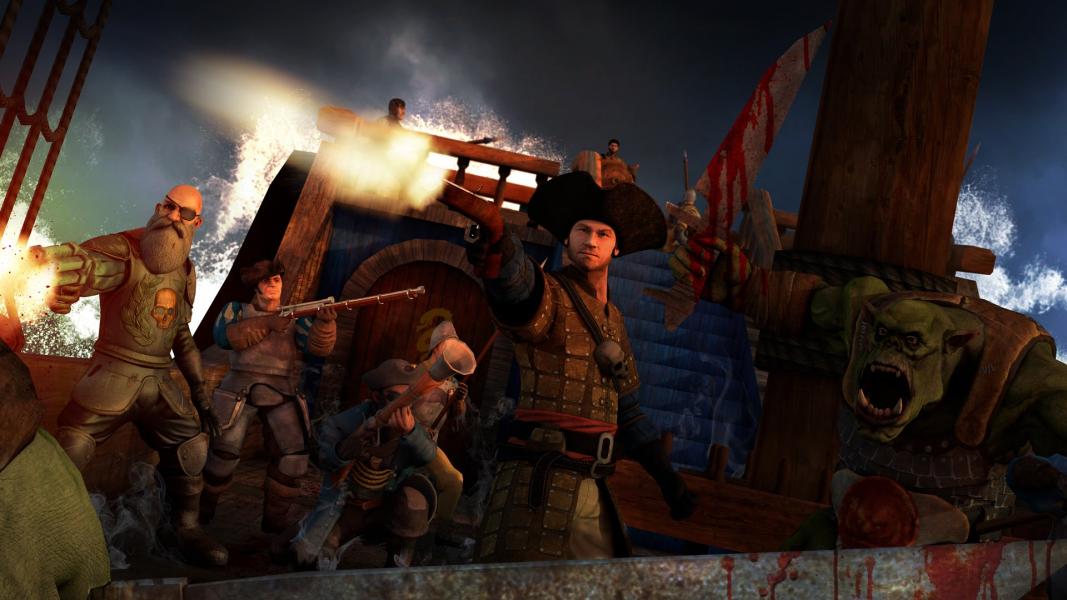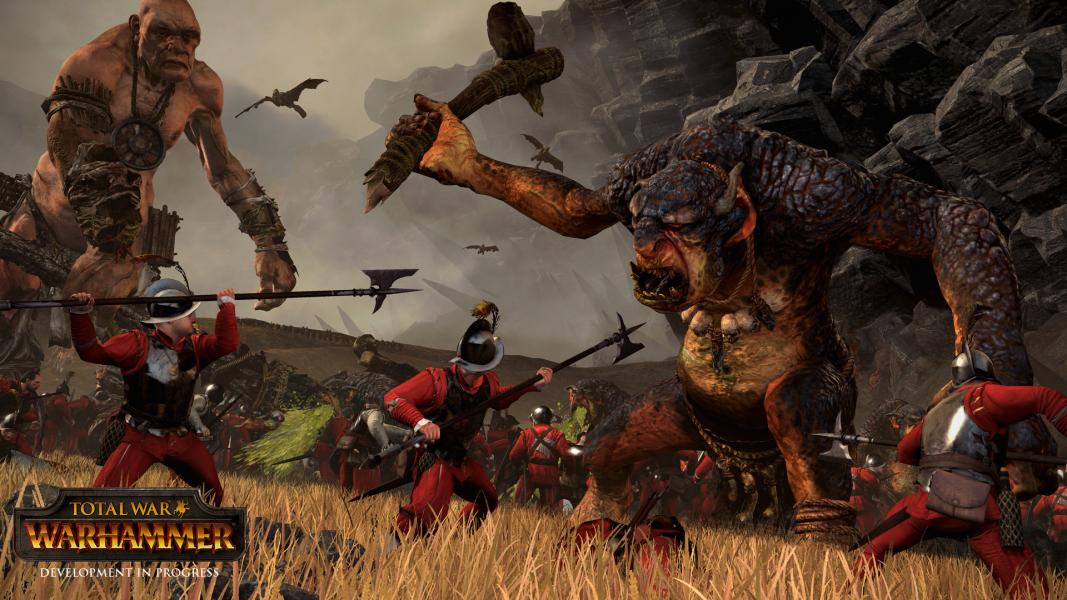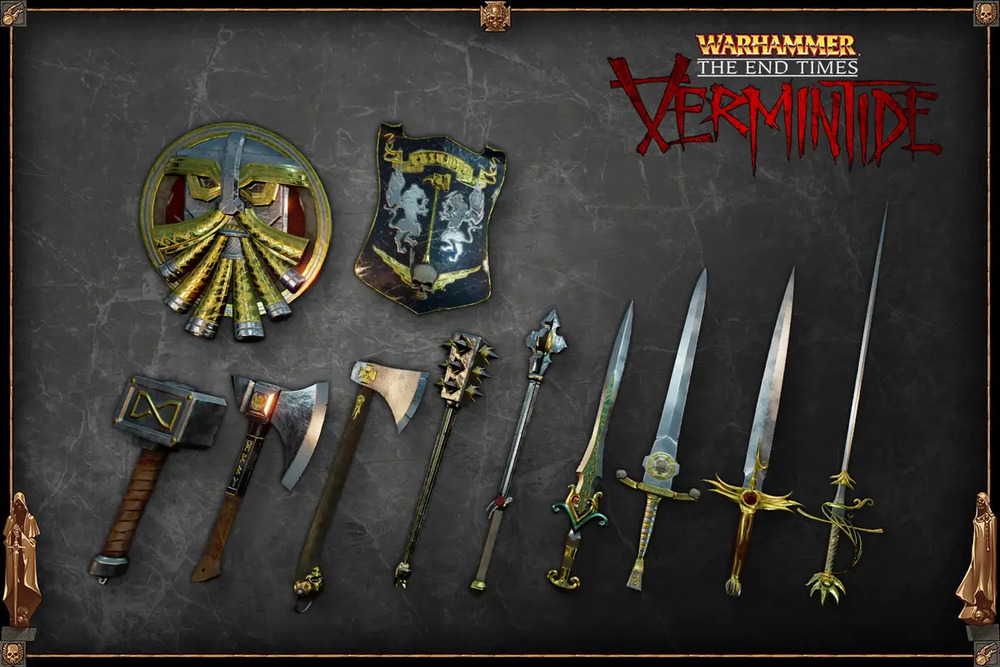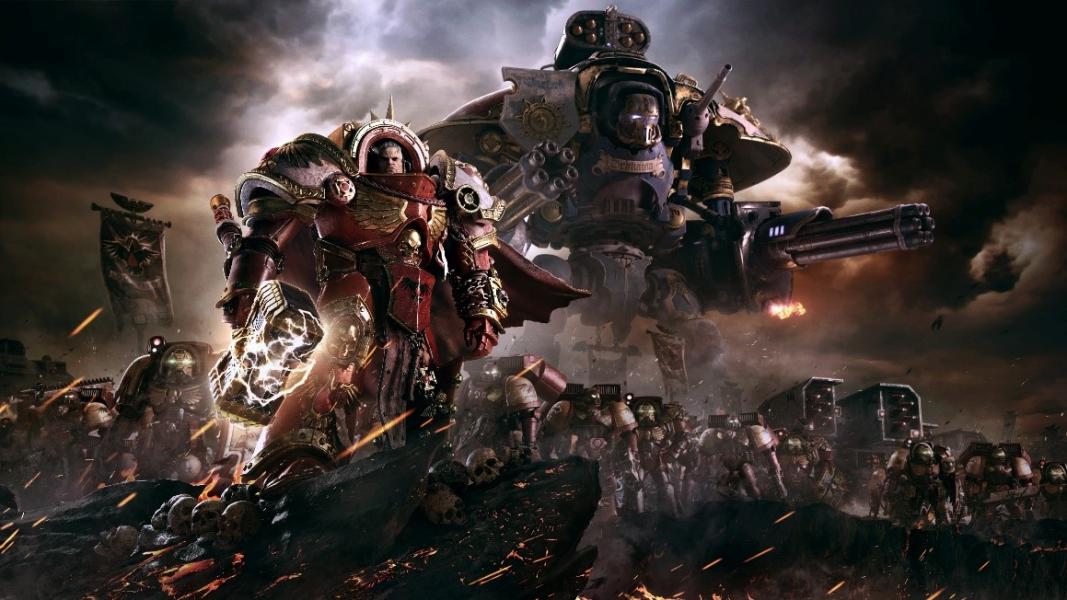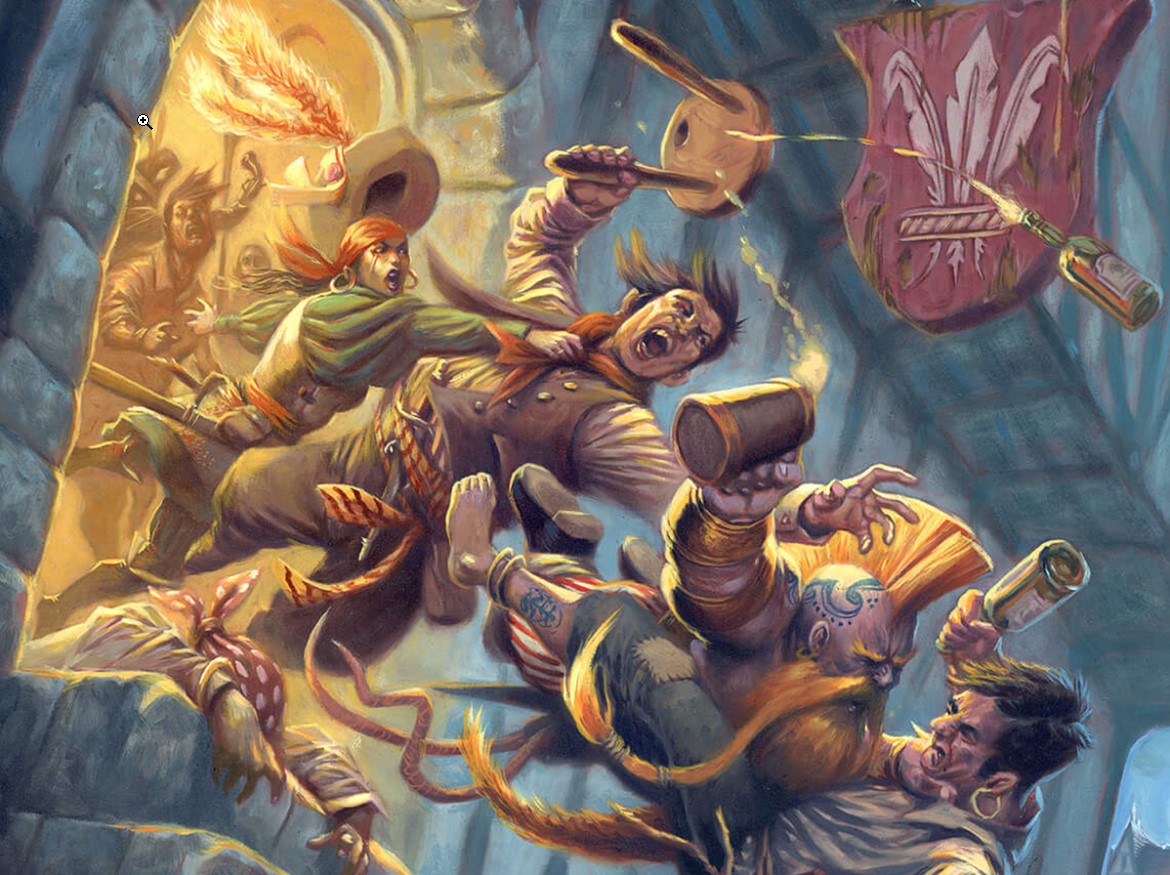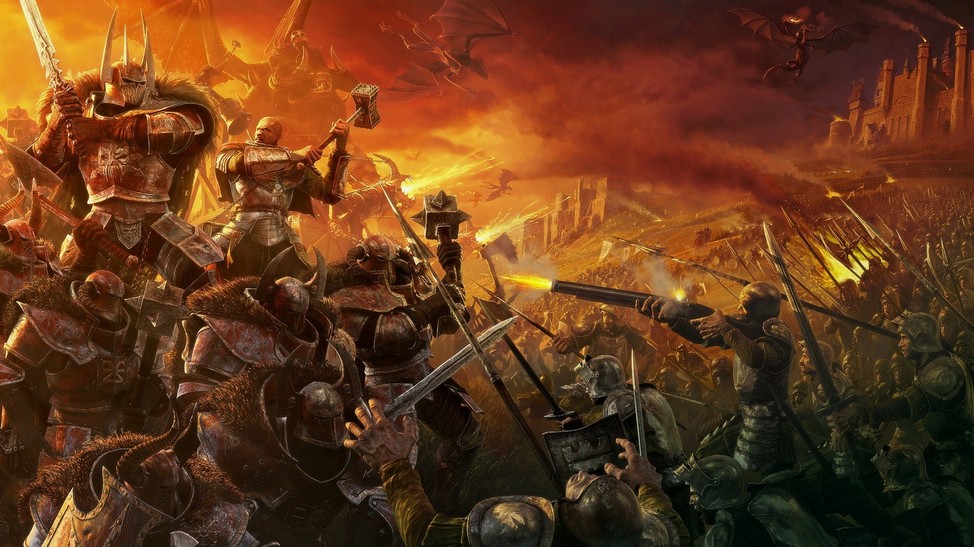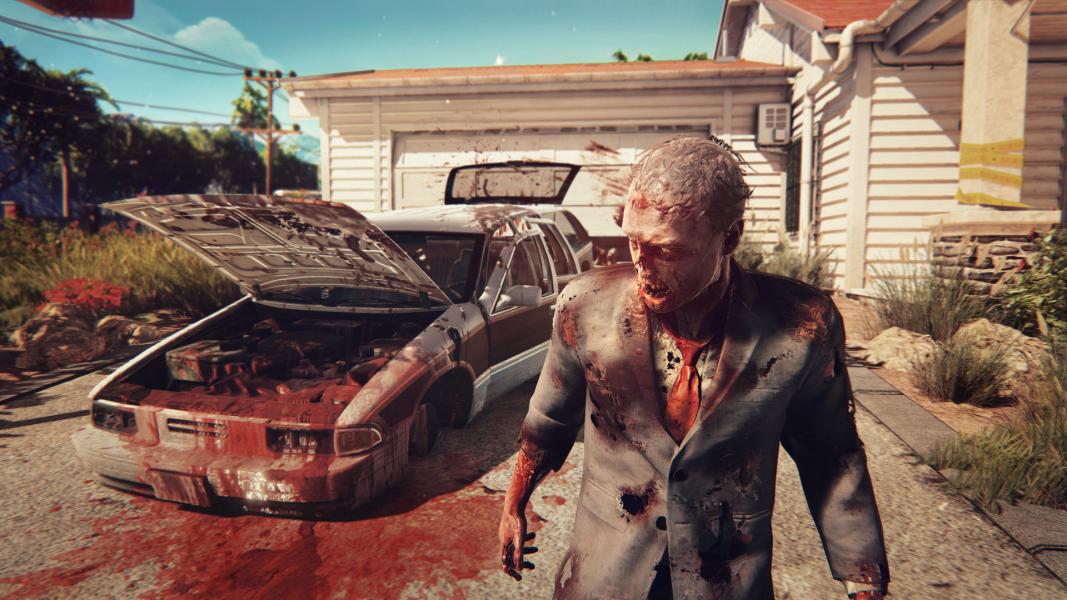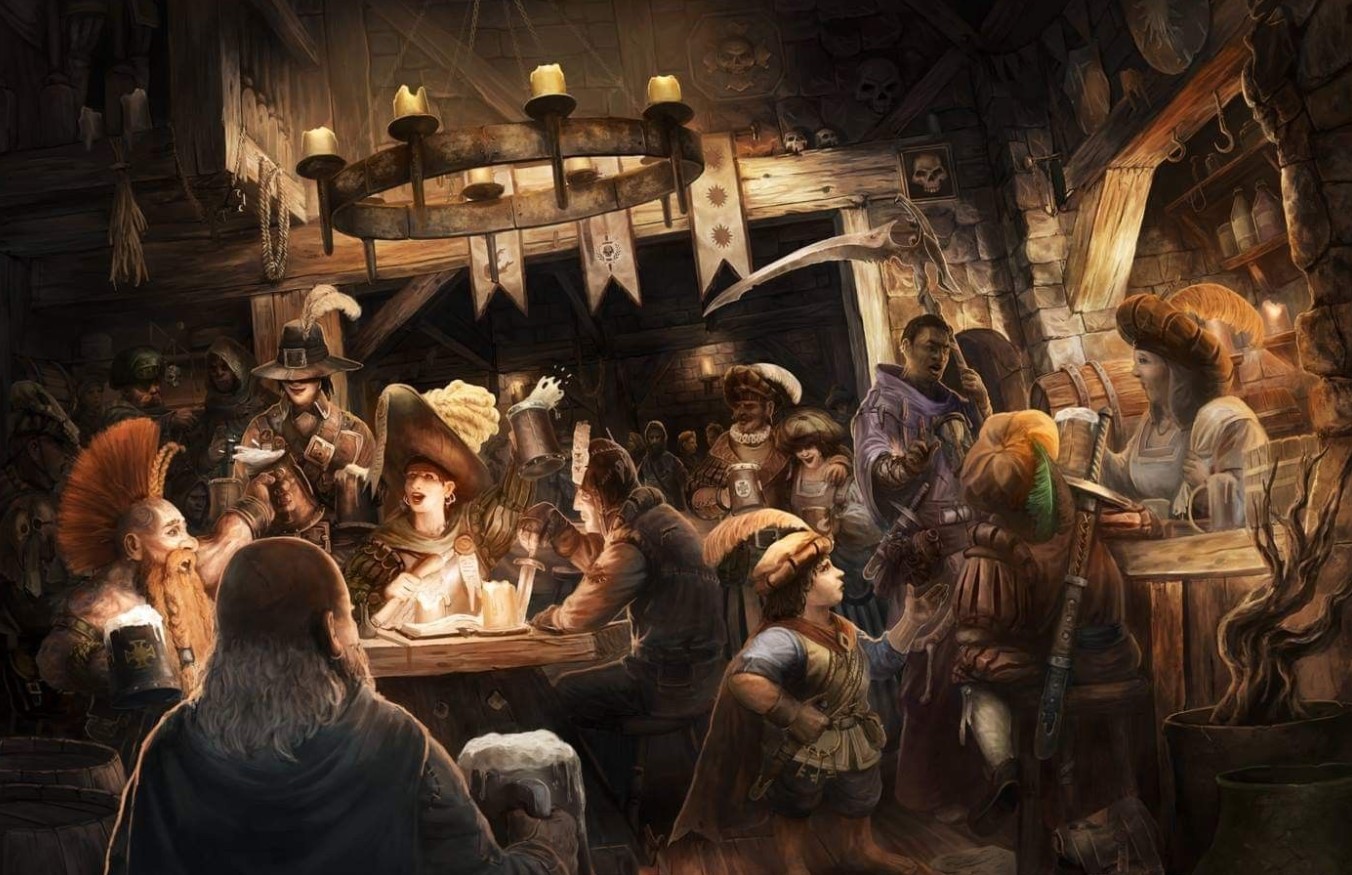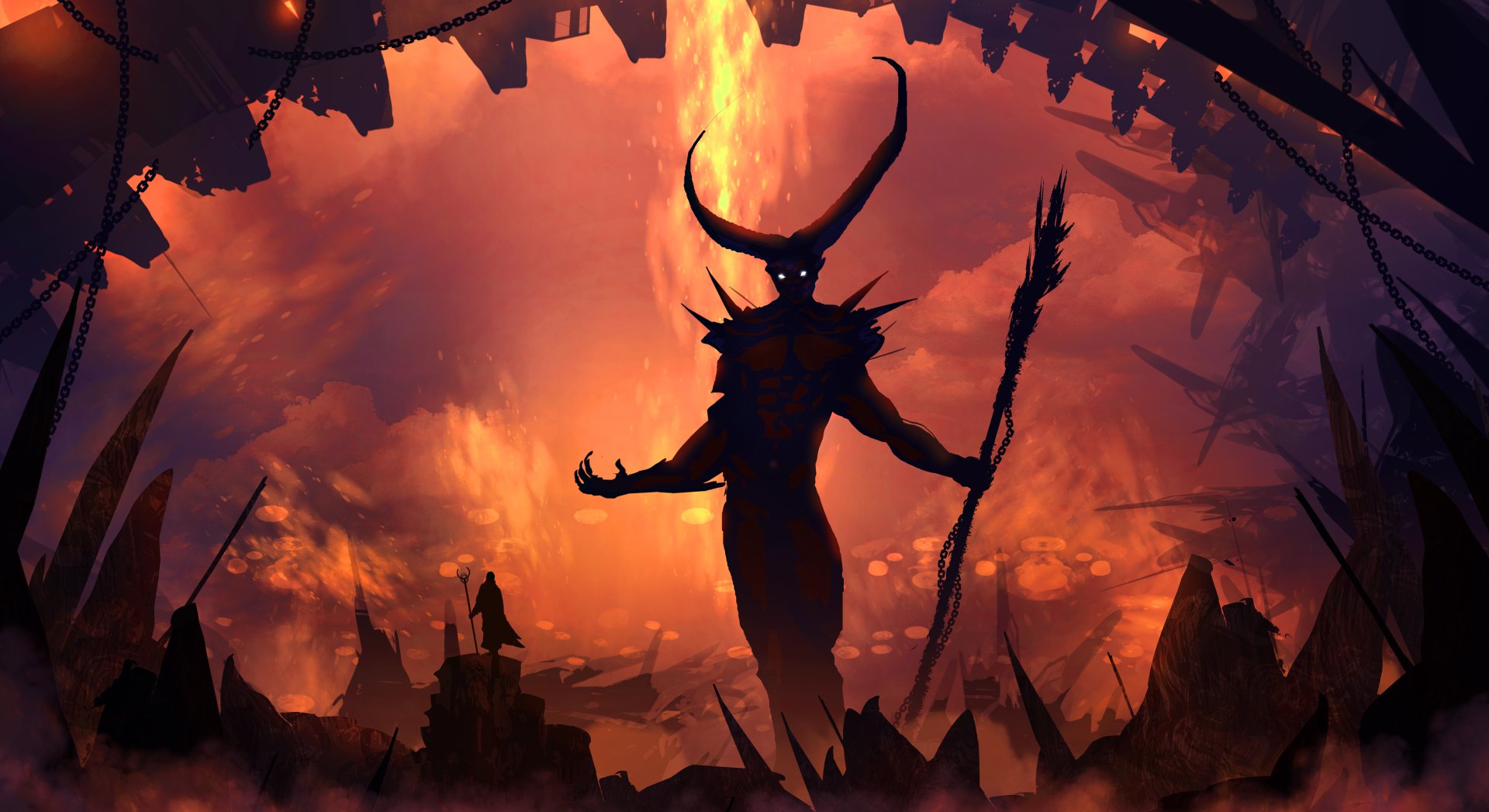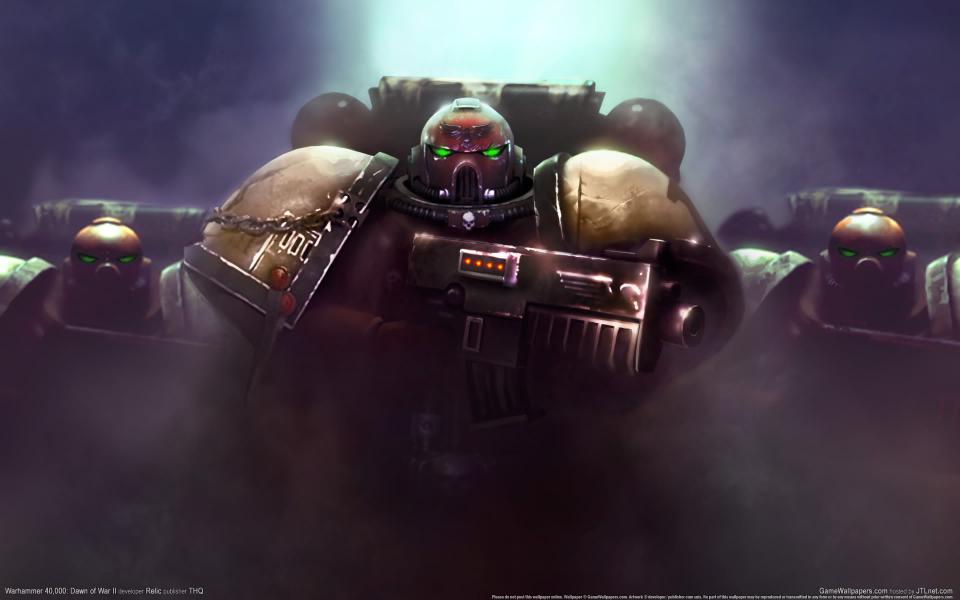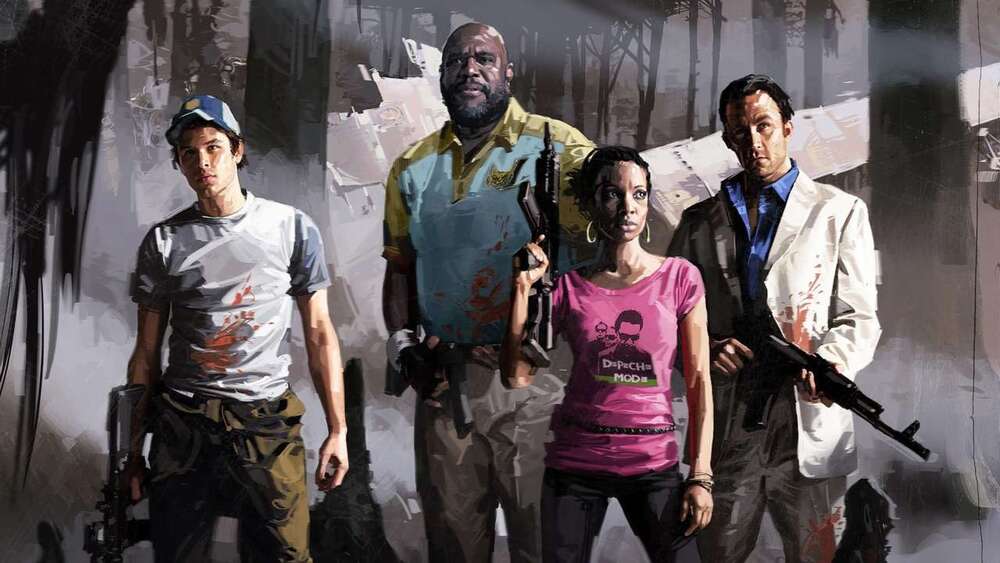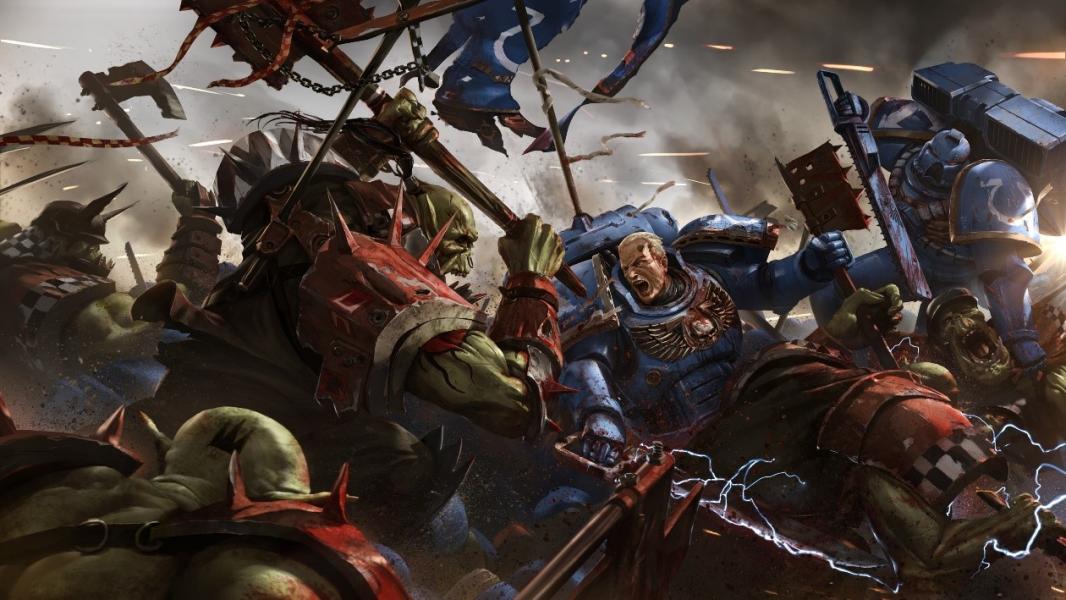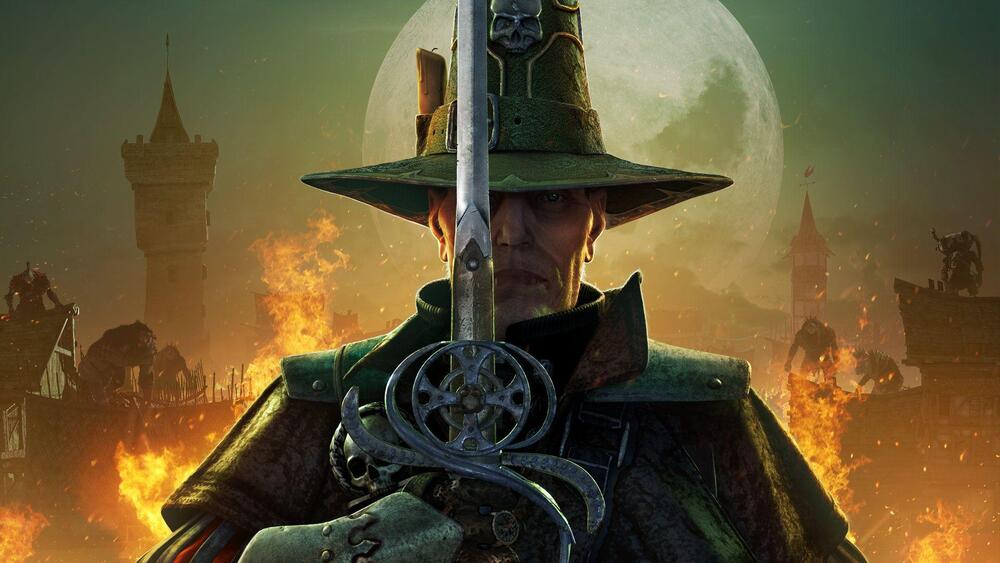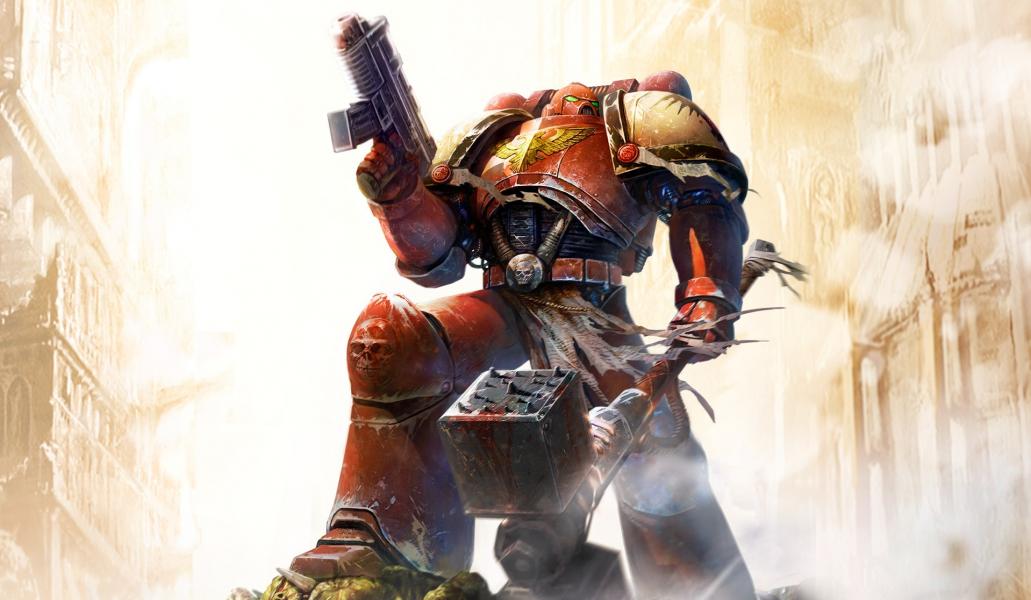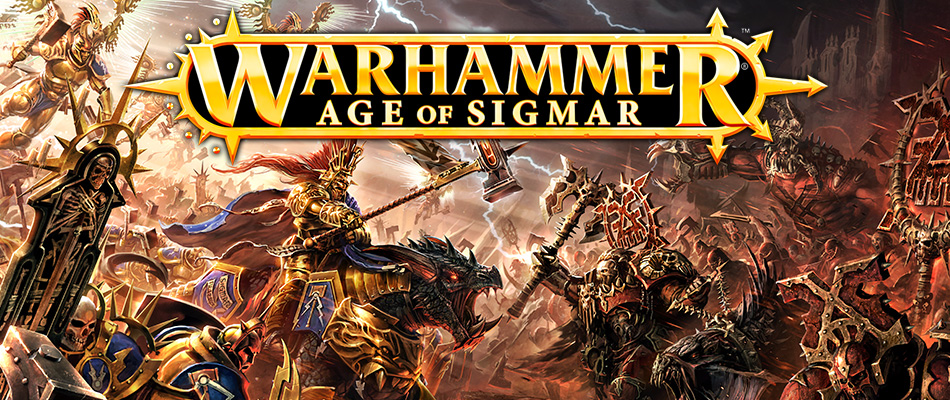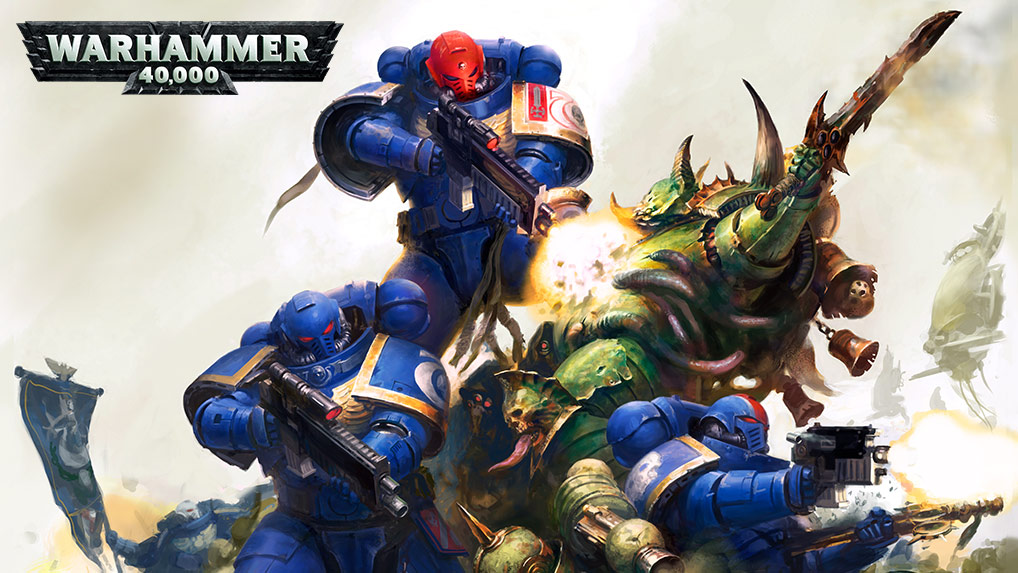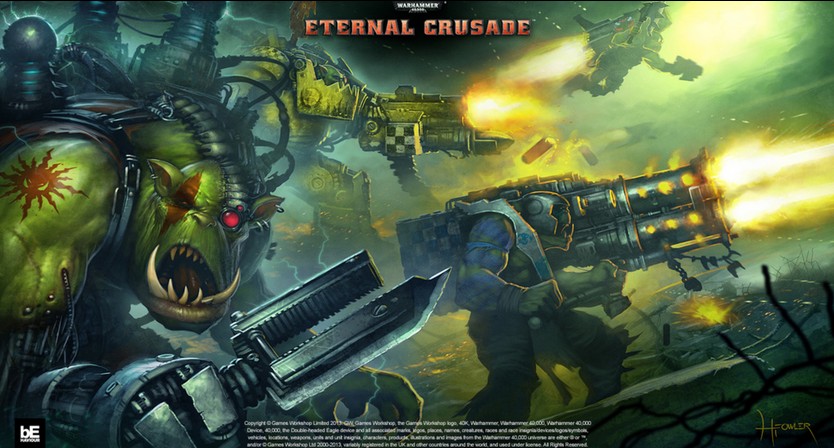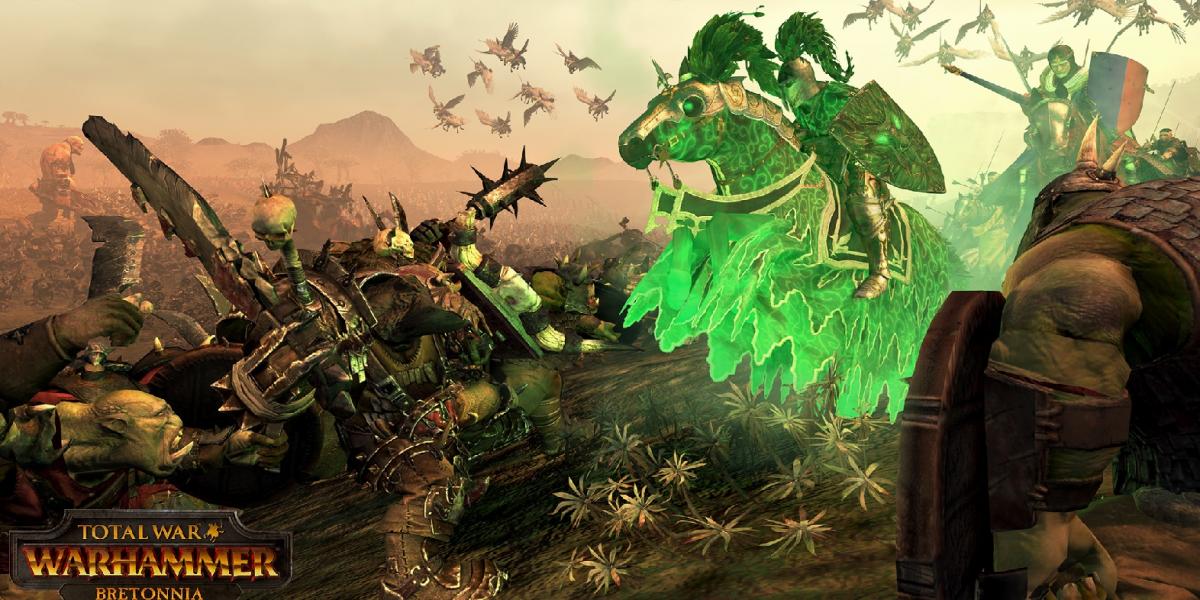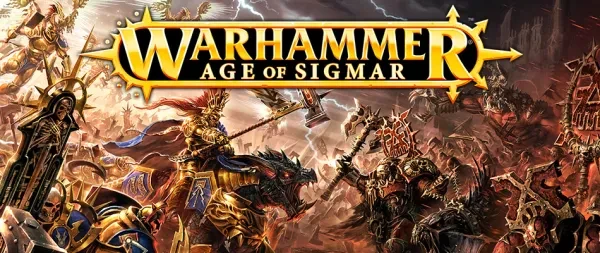
Across the Mortal Realms, a War Without End Rages...
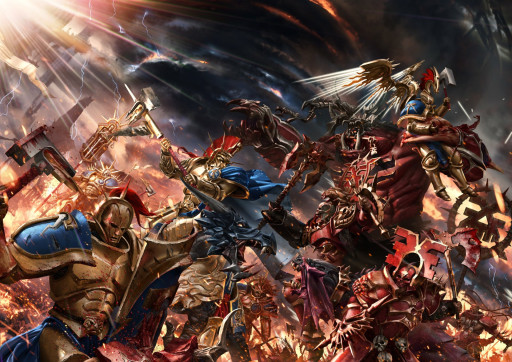
Age of Sigmar, the newest tabletop wargame by Games Workshop, has been hitting shelves with new armies and models since 2015. Taking place after the climactic Warhammer: End Times, it carries over both the bloodthirsty and noble forces of the Warhammer world in a new setting.
Casual tabletop gamers can be forgiven if they’ve overlooked Age of Sigmar, since, as a sequel to Warhammer Fantasy, it shares much of the same characters, factions, and style. It’s also has proven to be somewhat controversial to diehard Warhammer fans, who feel that it’s simply Warhammer Fantasy redressed to look and feel more like Warhammer 40k, its more popular sci-fi counterpart. For those who’ve just heard about it, or Warhammer fans looking for more information, here’s 10 interesting facts, both good and bad, about the background of Age of Sigmar.
Quick Warning: This article has major spoilers for Warhammer: End Times, and anyone who is invested in that series may want to avoid reading this article until they’re finished.
10) Death of the Old World
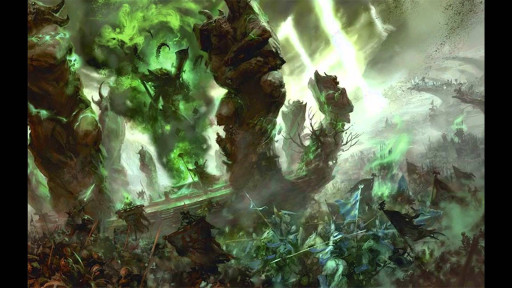
The End Times came and unleashed while many survived the terrible cataclysm, the planet Warhammer Fantasy took place on was destroyed.
Age of SIgmar is a high fantasy game, and fans who kept up with Warhammer Fantasy’s End Times updates and novels know that it’s also a post-apocalyptic setting. At the climax of Warhammer: End Times the world of Warhammer, now known as “The-World-That-Was,” was torn apart by unchecked magical energies in a cataclysm that left it a lifeless ball of molten magma in space. Despite the totality of that destruction, nearly all of the setting’s most popular races managed to escape and now reside in magical domains within the Warp, now called the Mortal Realms.
Some fans have criticized the new setting, saying that it feels like a watered-down version of Warhammer 40k. Warhammer Fantasy was always a unique mix of High Fantasy battles with Low Fantasy grittiness, but that latter has been completely removed in favor for a new celestial aesthetic. Fans of Warhammer Fantasy continue to bitterly complain about the sudden and drastic change to Games Workshop’s oldest original property, but whether those complaints will spark changes remains to be seen.
9) Lizardmen Take to the Skies

The Lizardmen have resided within the shadows of their creators’ temples for countless millennia, and at the end of the world they proved to be their salvation.
As the World That Was began to tear apart under the raw energies of the Warp, the Lizardmen, who had little direct participation in the wars to prevent it, sought to escape the planet. As it turns out, their sprawling temple-cities were really space vessels that their creators, the Old Ones, left behind. The lizardmen now wander the magic saturated stars, led by the Slann Mage-Priests, who have forged an alliance with Sigmar and the other Gods of Order.
The Lizardmen have aligned themselves with the forces of Order, thus putting them under the leadership and guidance of Sigmar. Strangely, they’re no longer seen as “lizardmen,” but rather “Daemons of Order.” This goes against previous definitions of “daemons” within the universe of Warhammer Fantasy, but the setting of Age of Sigmar is still greatly in flux, so this may change or be explained in upcoming Battle Tomes.
8) Dwarves, Elves, and Men Band Together
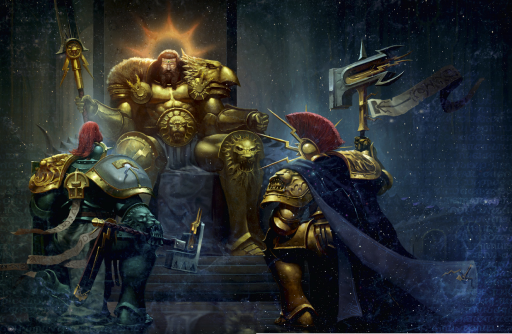
Sigmar is the first among equals in the alliance of gods sworn to Order, wages an unending war to defend the people of the mortal realms from the chaos gods and their ravaging armies.
One change that critics of Age of Sigmar have found off putting is the seemingly unnecessary name changes made to many of the Warhammer setting’s races. Since Age of Sigmar’s release, the dwarfs are now called Duardin, and the Elves have become the Aelfs. Despite that, both races still have a similar army structure as they did before, and have come together
Strangely, the Dark Elves have joined with the rest of their race in their alliance to Sigmar’s forces. Now known as the Exiles, they seem to be very loyal to people they once hunted and enslaved like prey. While they’ve always been enemies of Chaos, this is still a shockingly out of character decision on the Dark Elves part.
7) New Realms Ripe for Conquest
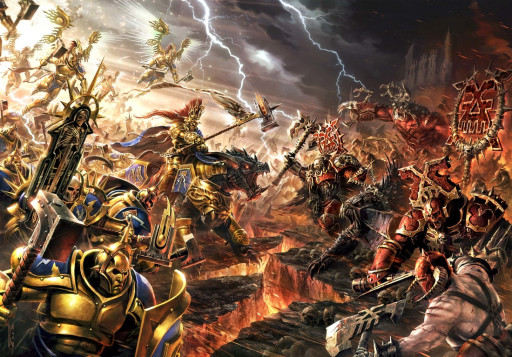
Despite the conflict consuming their world, the mortal warriors of both Order and Chaos continue their conflict across the magical realms.
Fans of Warhammer Fantasy know all about the Winds of Magic, whose powers are wielded by mages and wizards to be used in battle. The Mortal Realms, where the survivors of the Old World now reside, are a collection of eight pockets within the Warp that serve as the source for these magical energies. Each is unique and shaped by the magic that flows through it, with unique reasons for each faction wanting to take control of them.
These magical realms aren’t what they used to be, however, given that the daemonic forces of Chaos have had countless millennia to rampage across them. Much of the legendary constructs of the Gods that once ruled them without contest have been destroyed, leaving them filled with forgotten ruins and mystery shrouded dungeons. In lore, this gives the player armies some context for battle, giving them powerful artifacts to fight over.
6) The Horned Rat Joins the Chaos Pantheon
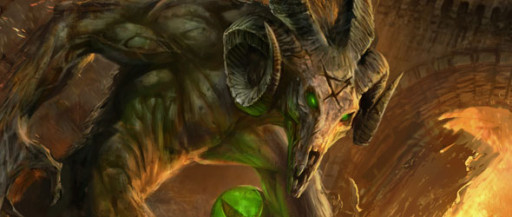
Avatars of the Horned Rat began to appear among the forces of the Skaven during the End Times, and after the Old World’s destruction he ascended to take his place as the fifth chaos god.
One of the most popular factions to play as in Warhammer Fantasy was the Skaven, the chaos tainted ratmen who ruled a globe spanning underground empire. Fans of Warhammer Fantasy will know that rather than worshipping any of the traditional chaos gods, they instead follow the vile deity known as the Horned Rat. While some fans previously speculated that the Horned Rat was an aspect of one of the other gods, possibly Nurgle or Tzeentch, but as of now he has ascended to become a fully formed god within the pantheon.
Daemons and flesh abominations with a similar appearance to the Horned Rat began to appear throughout embattled areas of the Old World during the End Times, not unlike the greater daemons of the chaos gods. Since the world’s destruction, the Horned Rat and his followers have become residents of the Realm of Chaos, and work with the other gods to undermine the Forces of Order. The Skaven capital of Skavenblight was even saved from destruction and given space within that same realm, serving as the Horned Rat’s holy city and place of rule.
5) Gods Take to the Battlefield

Nagash, God of Death, was resurrected by desperate vampires during the End Times. He now rules over the Realm of Death, holding a tenuous alliance with the Forces of Order as they battle against Chaos.
Given the now celestial nature of Age of Sigmar’s setting, its little surprise that the myriad of Gods now take a far more direct role in leading their followers. The most prominent of these is Sigmar, Mortal-God of the now destroyed Empire, who has made alliances with the now ascended gods of the Aelfs. Sigmar also found and rescued many of the surviving Dwarven gods, who joined his alliance in order to continue their ancient grudge against Chaos.
The old gods aren’t the only ones who have risen to the status of godhood. As previously stated, the Horned Rat has become one of the chaos gods, bringing his Skaven followers with him into their tenuous alliance. Nagash, resurrected during the End Times, stands as the undisputed god of death, with armies of vampires and necromancers following his every whim. Nagash now rules over the Realm of Death, and has made a pact with his former enemy Sigmar to aid against the forces of Chaos, the one thing Nagash views as a threat to his supremacy.
4) Slaanesh Missing, will S/He be Replaced?
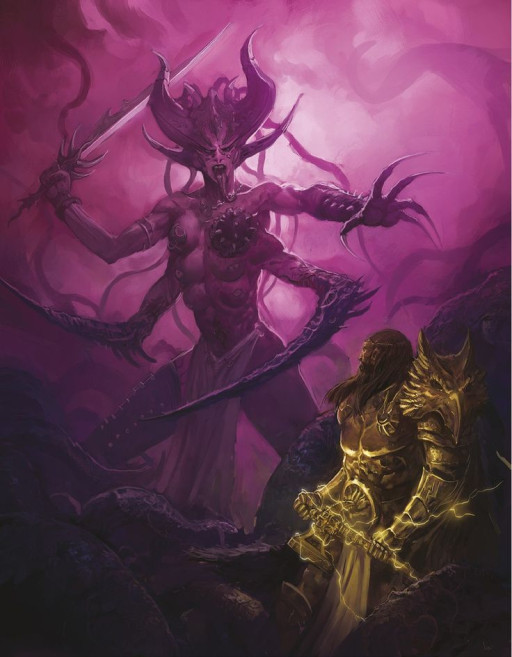
The daemons of Slaanesh still continue their crusades against the Mortal Realms, but without their true leader many of their own number have begun to covet his position of God of Perversion.
A noticeable absence that many fans have complained about is that of Slaanesh, who has been declared missing by Age of Sigmar’s lore. Some fans have theorized that this is related to the Horned Rat’s ascension, believing that the vermin-god may have schemed to usurp his godhood to take his place. Other possibilities are that Archaon the Everchosen is moving to take the absent Prince of Chaos’ place, or that some of Slaanesh’s own greater daemons are plotting to fill the void themselves.
Many of Age of Sigmar’s critics feel that Slaanesh’s absence is an attempt by Games Workshop’s leadership to “clean Warhammer up.” Warhammer, despite being an ultraviolent grimdark setting, is marketed heavily towards children, as well as serious wargamers. A hermaphroditic sex-god isn’t traditionally considered family friendly, and with rumors still circulating that Slaanesh is going to be killed off in Warhammer 40k, fans of her/his can be forgiven for being worried.
3) The Orcish WAAAGH partners with the Maw of the Ogres
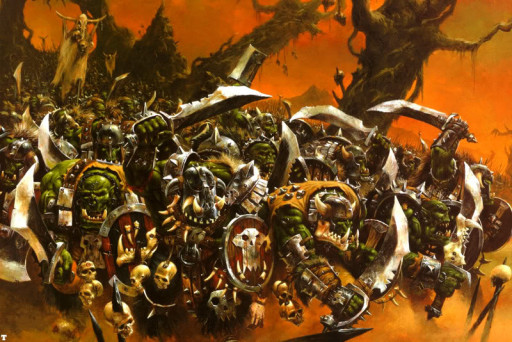
Orruks, orcs by another name, rampage across the mortal realms, looting anything of value and destroying everything else.
While much of the conflict in the Mortal Realms focuses on the grand battle between Order and Chaos, the raucous races of the Old World followed everyone else off their doomed planet. The Orcs and Goblins, now known as the Orruks and Grots, were carried away by their gods Gork and Mork’s desire to continue waging war. They now reside in the Realm of Ghur, a place where the energies of beasts and the wild rage unchecked.
The Ogre Kingdoms, flesh-eating monsters who were almost as much of a nuisance as the Greenskins themselves, have aligned themselves with the Orruks in the hope of joining in their quest for meaningless destruction. While not overly creative, the alliance between the Orruks and the Ogres, now going by the elegant moniker “Gutbusters,” has been dubbed the Grand Destruction Alliance. Trolls and Giants, renamed Troggoths and Gargants, have also joined the alliance, though the Gargants’ loyalties are divided between them and Chaos.
2) Lost Factions: What Happened to Tomb Kings and Bretonnia
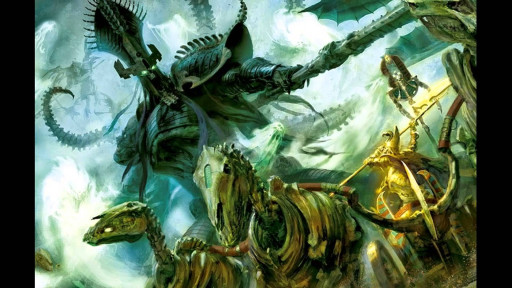
Nagash and Settra were ancient foes, but as of the End Times, the God of Death seems to have completely destroyed the forces of the Tomb Kings.
Perhaps one of the biggest changes to the Warhammer Fantasy setting now that its transitioned to Age of Sigmar is that two of its previous armies have seemingly been completely written out of the game. The Tomb Kings, the ancient undead rulers found in the Old World’s Southlands, were reportedly destroyed by Nagash during the End Times. Settra, the faction leader of the Tomb Kings, was left as nothing more as a decapitated head while the Old World crumbled around him, making any reappearance by him or his people highly unlikely.
The Bretonnian Knights, who had long been the Empire’s staunchest allies and greatest human rival, had far less fanfare when they were essentially written out of the lore. Since the Bretonnian people were never followers of Sigmar they were presumably not taken into his city, Azyrheim. The remnants of Bretonnia may reside with the Free Peoples, a collection of human kingdoms from the Old World who have not aligned themselves with Chaos or the Gods of Order.
1)Sigmarines? The Newest Addition to Sigmar’s Forces

The Stormcast Eternals, immortal warriors selected by Sigmar of himself for their heroism and willingness to sacrifice themselves for the greater good of their fellow man.
One of the more controversial additions to what was once the Imperial army were the Stormcast Eternals, warriors hand selected by Sigmar to stand as the bulwark against the slavering armies of the chaos gods. With their patron’s blessing, they wield demi-god like powers and act as the Order Alliance’s shock troops. They’re also immortal, being pulled away from battle at the time of their deaths to be forged anew in Sigmar’s new home, Azyrheim.
The reason the Stormcast Eternals have been less than well received by fans of Warhammer Fantasy is due to their similarities to the Space Marines from Warhammer 40k. They’re so similar, in fact, that many players have started referring to them as “Sigmarines,” tying them in further with the argument that Age of Sigmar has very little original content or story elements. Its currently assumed that they will become more distinct and unique with the addition of new updates.
Age of Sigmar is certainly a mixed bag of interesting concepts and seemingly nonsensical story decisions, but it’s important to remember that, while it’s something of a sequel to the old setting, it’s still a new game. The Warhammer Fantasy that fans loved had eight editions and over thirty years to develop, and many things were added and removed over that period. While it’s not off to an overly great start, it may undergo drastic changes depending on Games Workshop’s future decisions.
You may also like...
7 Monstrous Creatures We Want to See in Total War Warhammer II
7 Legendary Lords Fans Want Added to Total War Warhammer
5 Minor Factions that May be in Total War Warhammer II
Games Workshop: 10 Reasons Why They Are Loved by Millions of Fans Worldwide
Top 7 Legendary Lords in Total War Warhammer


